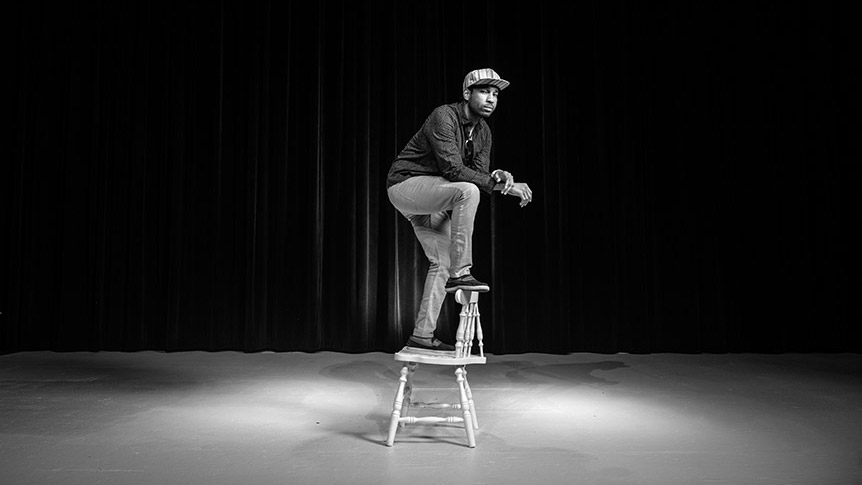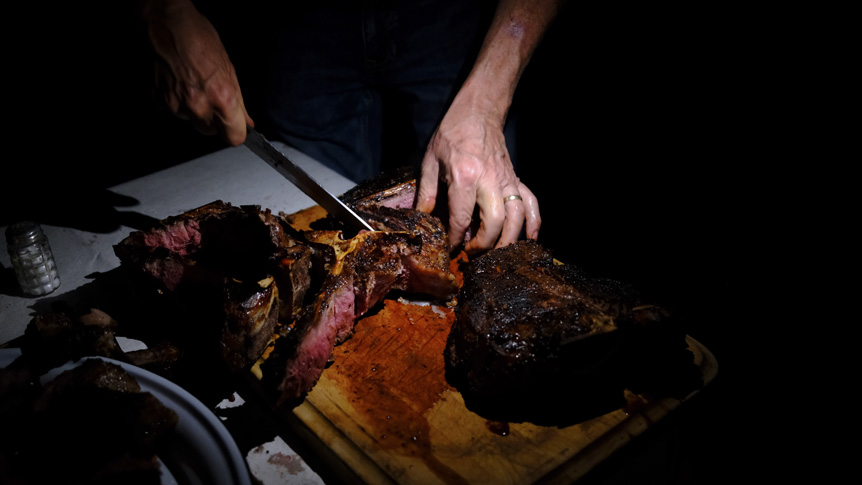
 4 minute read
4 minute read
How Moyo Oyelola Tells Stories Through Photography
Growing up in Abeokuta, a small town outside Lagos, the commercial capitol of Nigeria, Moyo Oyelola harnessed his inner creativity early on.
Moyo’s hometown embraced the rich artistry and culture that generations before him had instilled, and even as a child, Moyo embraced this innate creativity and found ways to make it flourish. “The ability to sketch, draw, and experiment is always there; it’s about fighting to keep it as you get older”, Moyo says.
After a move to Austin, Texas when Moyo was 7, his father purchased his first point and shoot digital camera, which Moyo quickly adopted as an outlet for all his creative energy. He brought it on high school soccer trips and other school events, documenting his experiences and what high school life was like through photography. His passion for creativity evolved through his class selections, which featured lots of multimedia – graphic design, photography, and more. Initially, he used stock imagery in his graphics projects, but quickly decided it would give him more creative control to create his own images, thus vastly increasing his photography acumen.
At the University of Texas in Austin, Moyo’s interest in photography grew and he upgraded from Dad’s bulky, older point and shoot camera to a slimmer, more portable point and shoot. He continued his role as the documentarian during his college years, cataloguing day to day life and the experiences of him and his classmates.. As he increased his education in photography and the arts overall, he gained the technical knowledge and skill to advance. However, during this period of learning and growth, Moyo says, “the ‘how’ was there, but the ‘why’ was still disconnected.”
In time, that would change. Moyo experimented as he continued to gain experience in photography; learning to listen; to the scene, to his subjects, to his own artistic instinct; and turn what he discovered into seeing the essence of his subject. “In my work, I illuminate the human struggle, but also try to find the silver lining,” Moyo says. “Listening is the most important form of artistry in the world; it’s about listening to the environment, other people, and even your own body. How to translate that into art is so important, especially in the times we’re in today.”
As his shooting experience increased, he grew tired of his older, bulkier gear with unsatisfying workflows. One day, on a trip to pick up some color gels at his local photo shop, Moyo stumbled across some Fujifilm gear. “It was the gear I didn’t know I wanted until I picked it up and started taking pictures,” Moyo says. Moyo’s first official Fujifilm gear was an X-T2 camera body and grip with the XF23mmF1.4 lens. The combination of the prime lens and a simple, tactile camera body was a winning one for Moyo. As his kit evolved, Moyo also picked up an X-T3, eventually leading him to his current X-T4, along with a couple X100 editions, a variety of Fujifilm prime and zoom lenses, and even a Fujifilm Instax SQ-6 instant camera.
Now, a Creative Director by trade, photography is just one of Moyo’s artistic languages. He also paints, works on museum installations, and more. “My world is dynamic,” he says. “Photography has helped me conduct a lot of experiments; creating sets, making backdrops, and this has helped my creative direction grow. It’s helped bolster and polish all of the aspects that combine to make a beautiful finished piece.”
Currently, Moyo also leads the Open Chair Project, which, according to its website, “recognizes the importance of creating spaces that lead to a sense of community and mutual discovery. We present a perspective of a rapidly changing city through intimate portraits that illustrate the love, humor, and resoluteness of Black Austin. Through our homage to past and present Austin, we hope to foster a space for minority Austinites to continue the audacity of visibility.”
“The black/brown population has been in decline in Austin,” Moyo says. “Open Chair counters the narratives of what is happening in the community. It’s about encouraging people to participate in what happens to their city, and to preserve the culture and history that people have established in the city – and how to keep that culture diverse. This is about visibility – keeping an open chair at the table for the people who are the fabric of the community.” In 2019, during local celebrations honoring Dr. Martin Luther King, Jr., the Open Chair team set up a series of community portraits to capture the essence of critical neighborhoods in Austin, including Southeast Austin and College Heights, which are primarily African American and Hispanic, respectively. Open Chair photographed 10 individuals in each neighborhood, along with video interviews of each of them. The images will be displayed throughout the communities as a reminder of the importance of celebrating the history of these communities. A book is also forthcoming later this year.
As for Moyo, this is yet another way he’s expressing his creativity and making a difference. With his Fujifilm gear providing the toolkit he needs, he says “I have the gear I need to capture the stories I want to, and I feel good about that.”

































































